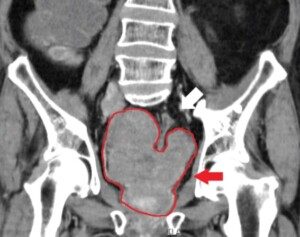
Here’s one more reason to stop avoiding exercise: It may actually reduce the amount of bleeding in the brain caused by a ruptured artery.
This comes from a study published in Stroke and Vascular Neurology that analyzed the records of 686 people treated for intracerebral hemorrhage (a type of brain bleed).
Intracerebral hemorrhage is the deadliest type of hemorrhagic stroke. This isn’t the same kind of stroke that most people have some familiarity with; the one for which old age is a major risk factor.
The other type of stroke is called ischemic, which means oxygen supply is cut off to a part of the brain that arteries feed – because there’s a blockage in the artery upstream. Bleeding is not involved.
An intracerebral hemorrhage is the result of a tear in a blood vessel.
This tear can result from a ruptured aneurysm (bulging blood vessel), head trauma and the most common cause, high blood pressure.
The bleeding from the artery can drown brain cells with blood, damaging them.
You might be wondering how blood on brain cells could harm them, since brain cells need a blood supply to function.
Look at it this way: We all need water to live. But at the same time, if we’re inundated with floodwaters, we could drown.
Another way that an intracerebral hemorrhage could be fatal is that, when the bleeding is extensive, increased pressure inside the skull will build up and be life-threatening.
Exercise and Bleeding in the Brain
The University of Gothenburg study took place at Sahlgrenska University Hospital between 2014 and 2019.
The research revealed an important connection or association between physical activity and reduced hemorrhage size.
The study paper (2023) defined “physical activity” as follows:
At least four hours of light physical activity each week, such as walking, pedaling an exercise machine, swimming, gardening or dancing.
The results indicated that those who were physically active had significantly smaller hemorrhages compared to those who were inactive.
On average, active people experienced bleeding volumes that were 50 percent smaller upon arriving at the hospital.
This finding mirrors previous animal studies, but it marks the first time such a link has been demonstrated in humans.
How does exercise reduce the volume of these brain bleeds?
The study found that the beneficial effects of physical activity were seen regardless of the hemorrhage’s location in the brain.
Active individuals had smaller hemorrhages in both the deep brain regions, which are typically associated with high blood pressure, and the surface regions, linked to age-related conditions such as dementia.
The paper did not explain precisely how exercise is protective in these cases.
In fact, a causal relationship has not been identified. Only an associative link has been found.
But that’s definitely important enough to motivate sedentary people to stick to an exercise regimen.
This can also include light hiking, low impact aerobics classes and yoga.
How to Get Started in Exercise if You’re Sedentary

If you’re new to exercise and have been sedentary for a while, start slow and gradually build up your activity level — especially if you’re older.
Begin with simple, low-impact activities like walking or light yoga or pedaling a bike.
Aim for about 10-15 minutes per day and gradually increase the duration as your body adjusts.
Work towards at least four hours a week of exercise.
Consistency is key, so try to incorporate physical activity into your daily routine, even if it’s just a short walk after meals.
Over time, you can try adding variety by including activities like swimming laps, fitness classes or recreational type hiking trails.
Make sure to warm up and cool down before and after each session to prevent injury and promote flexibility.
Sedentary people are known to cite a variety of reasons that they avoid dedicated exercise, even light activity.
But what if you were to tell yourself, “Hey, sticking to an exercise routine just may result in a smaller brain bleed if I ever get hit in the noggin?” This could be great motivation!
Thomas Skoglund, associate professor of neurosurgery at the University of Gothenburg and a co-author of the study, points out in the paper that smaller hemorrhages aren’t as likely to cause serious complications, when compared to large bleeds.
 Lorra Garrick has been covering medical, fitness and cybersecurity topics for many years, having written thousands of articles for print magazines and websites, including as a ghostwriter. She’s also a former ACE-certified personal trainer.
Lorra Garrick has been covering medical, fitness and cybersecurity topics for many years, having written thousands of articles for print magazines and websites, including as a ghostwriter. She’s also a former ACE-certified personal trainer.
.









































